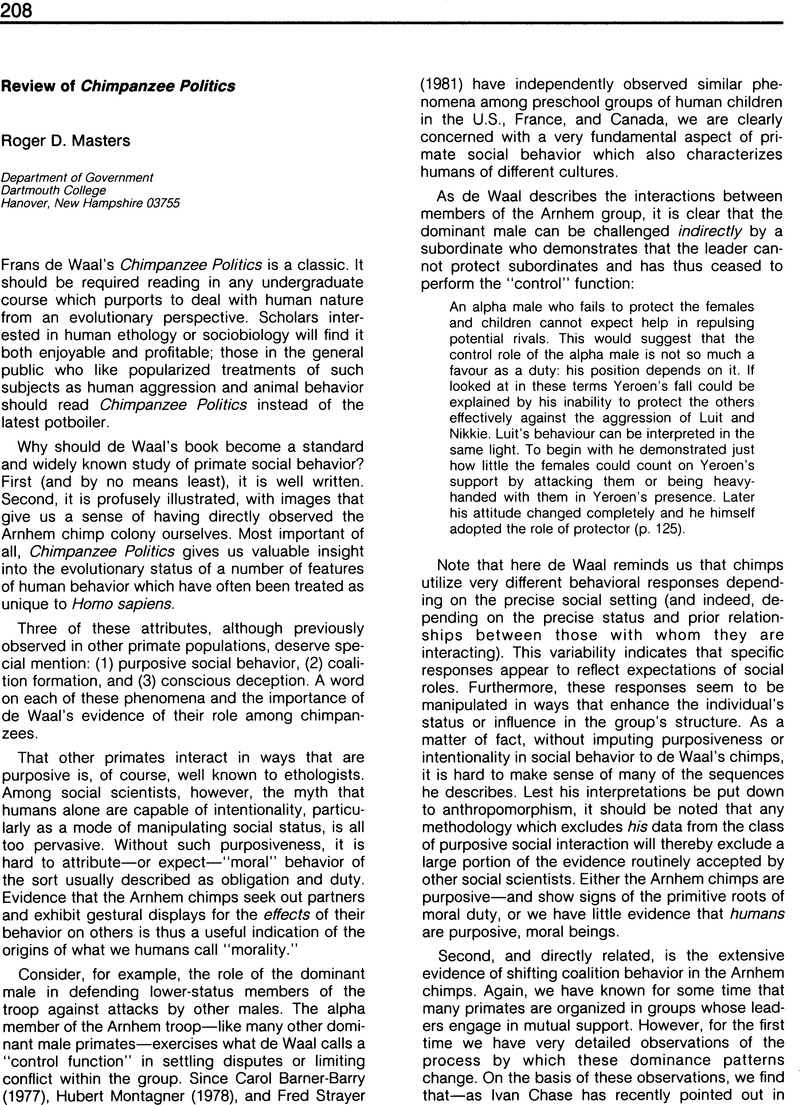Crossref Citations
This article has been cited by the following publications. This list is generated based on data provided by Crossref.
Falger, Vincent S.E.
1990.
The Arnhem Zoo chimpanzee project: a political scientist's evaluation.
Social Science Information,
Vol. 29,
Issue. 1,
p.
33.



